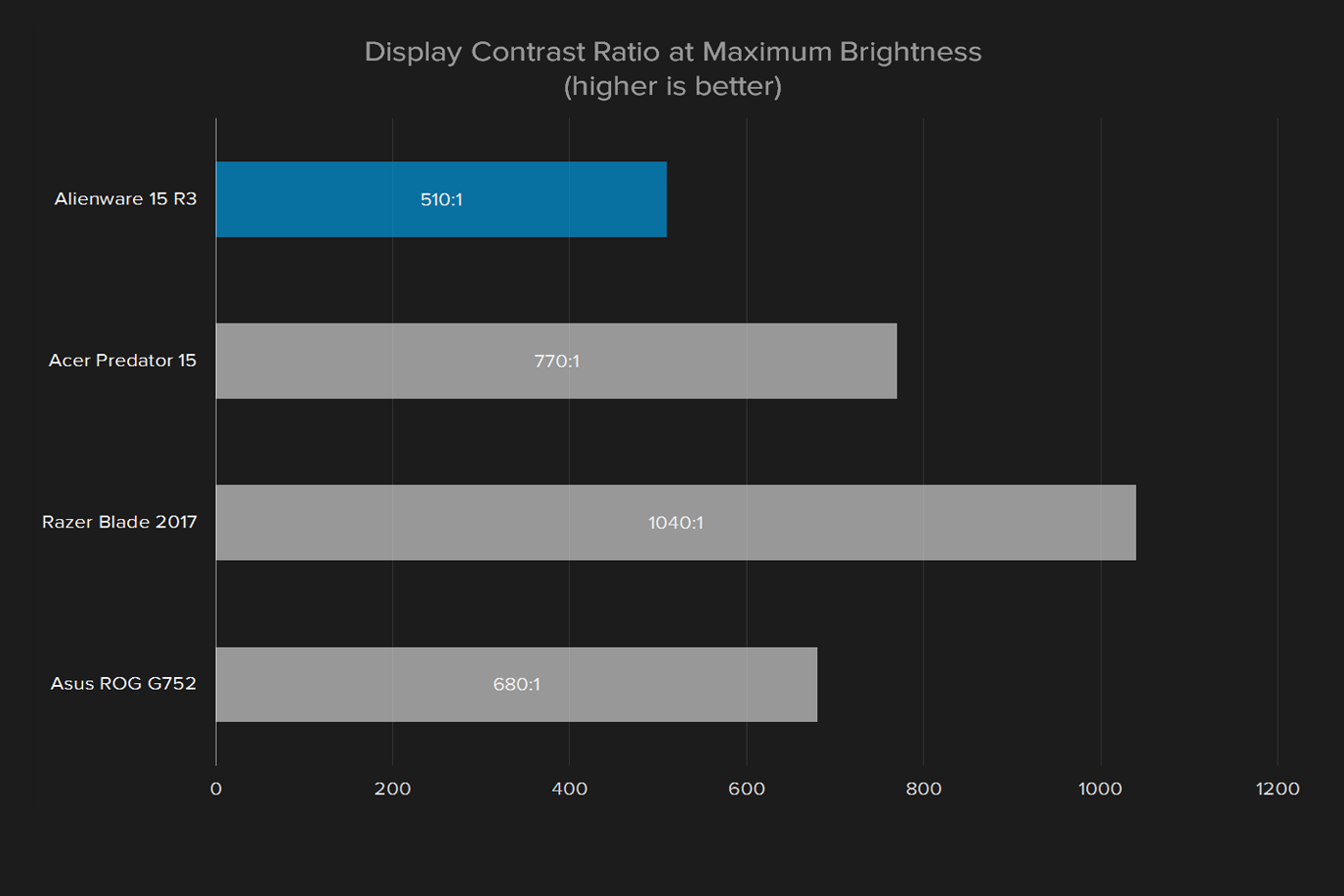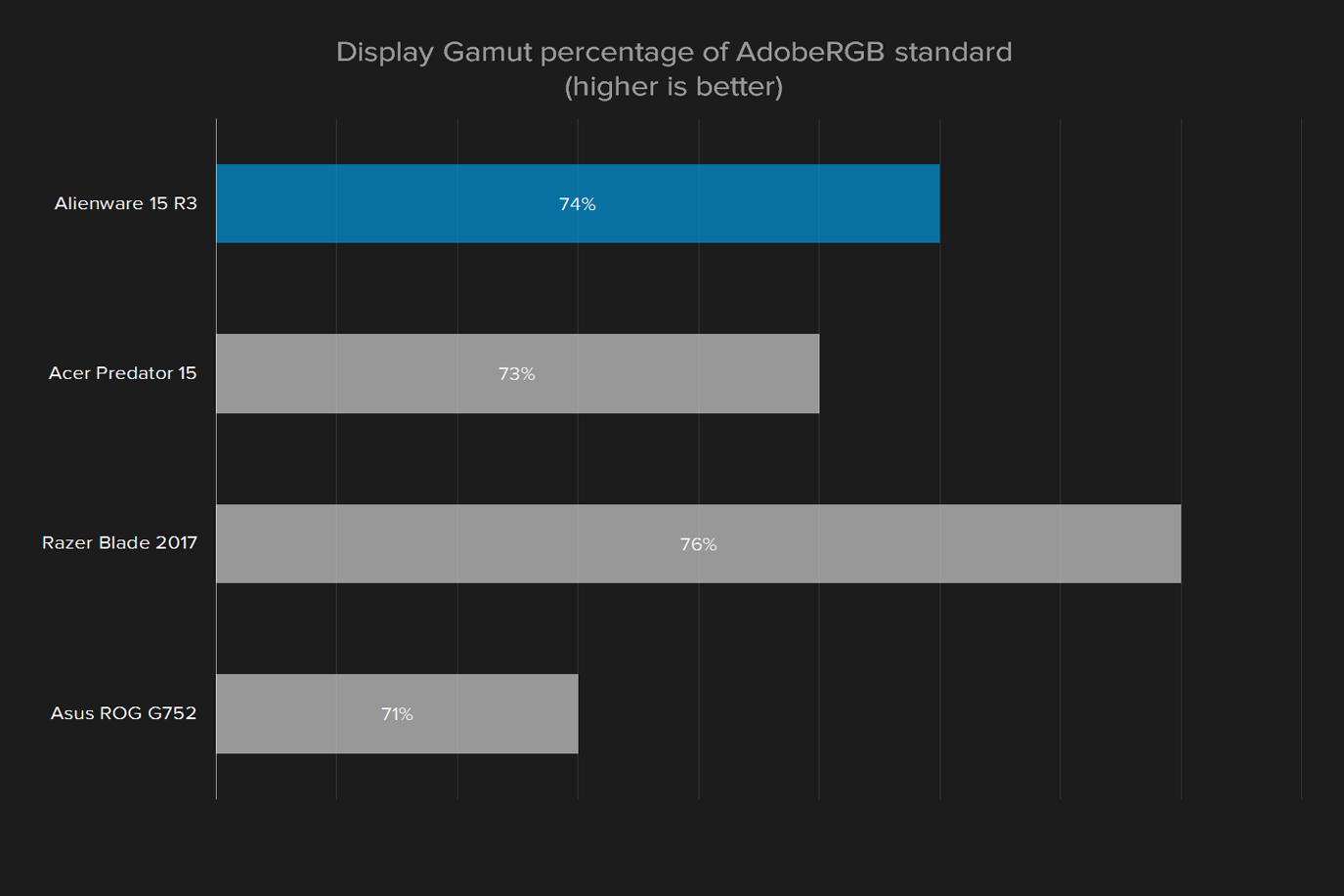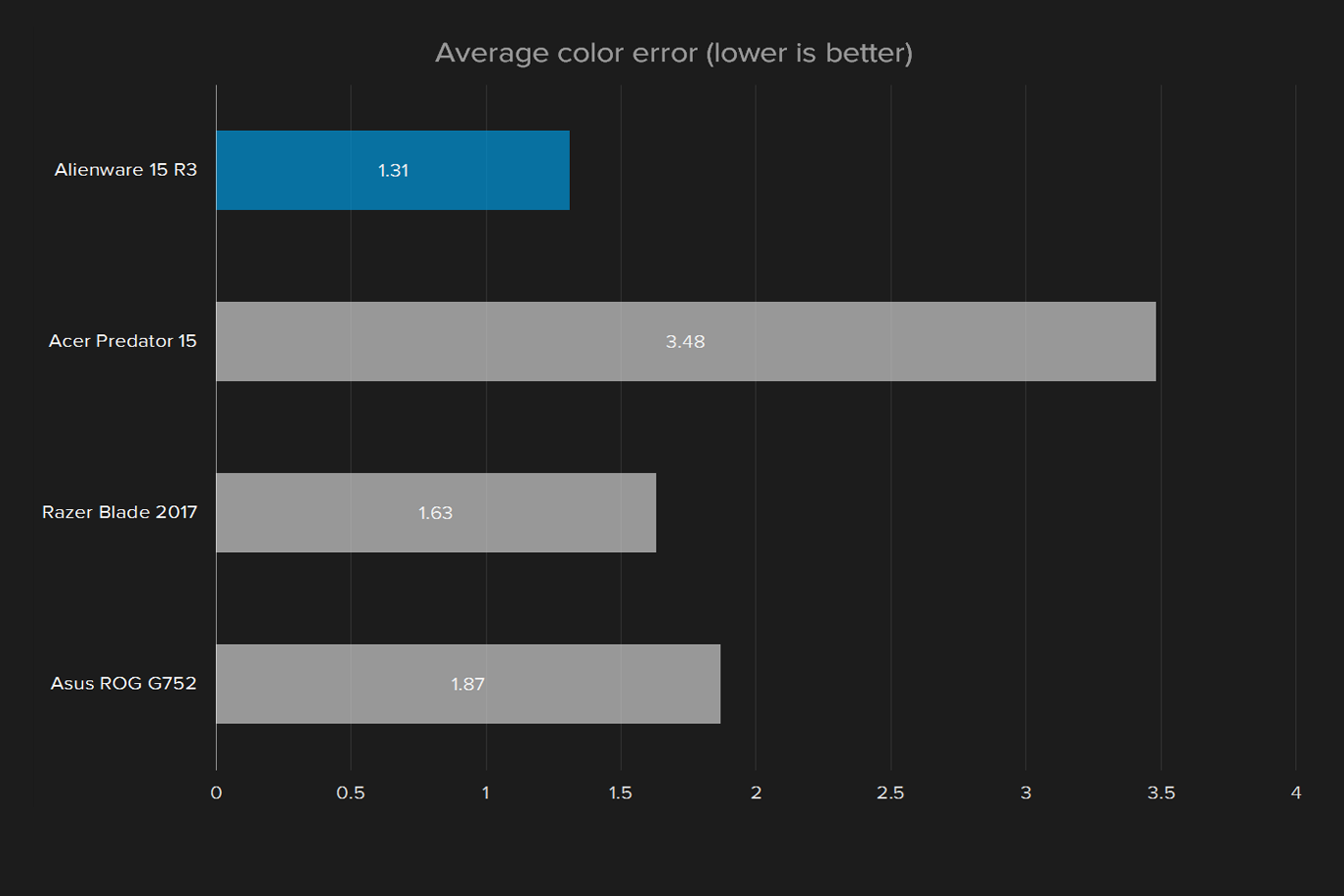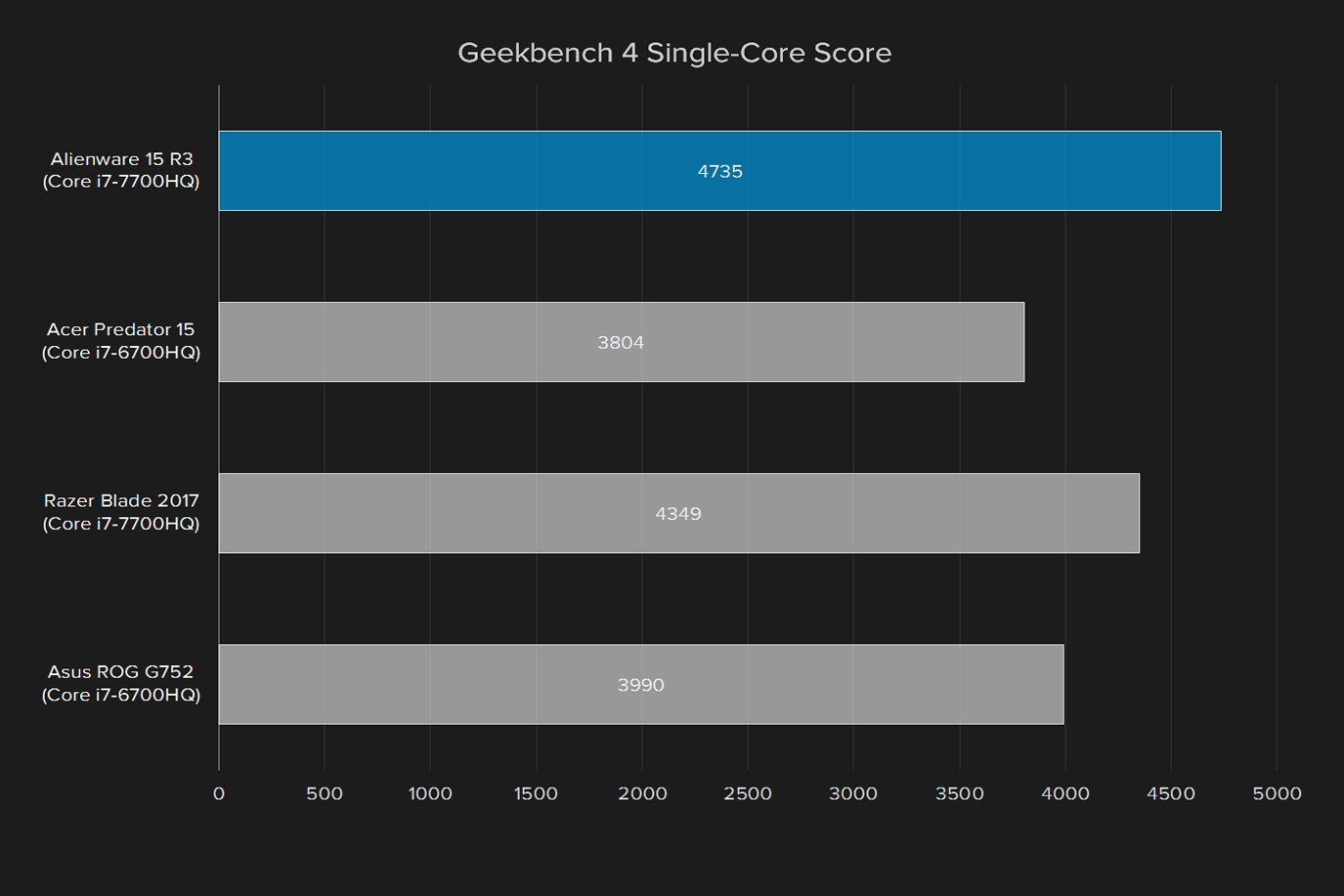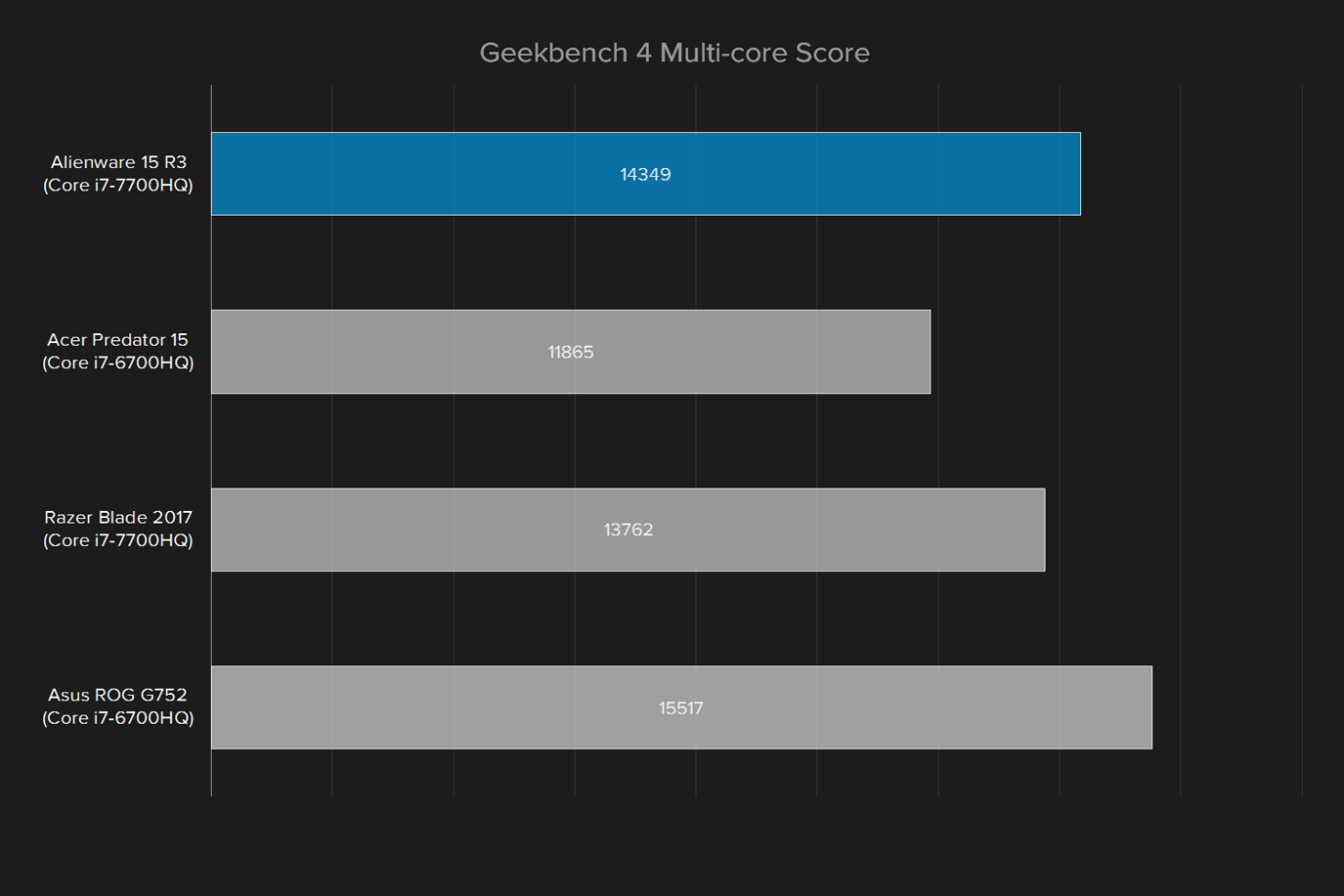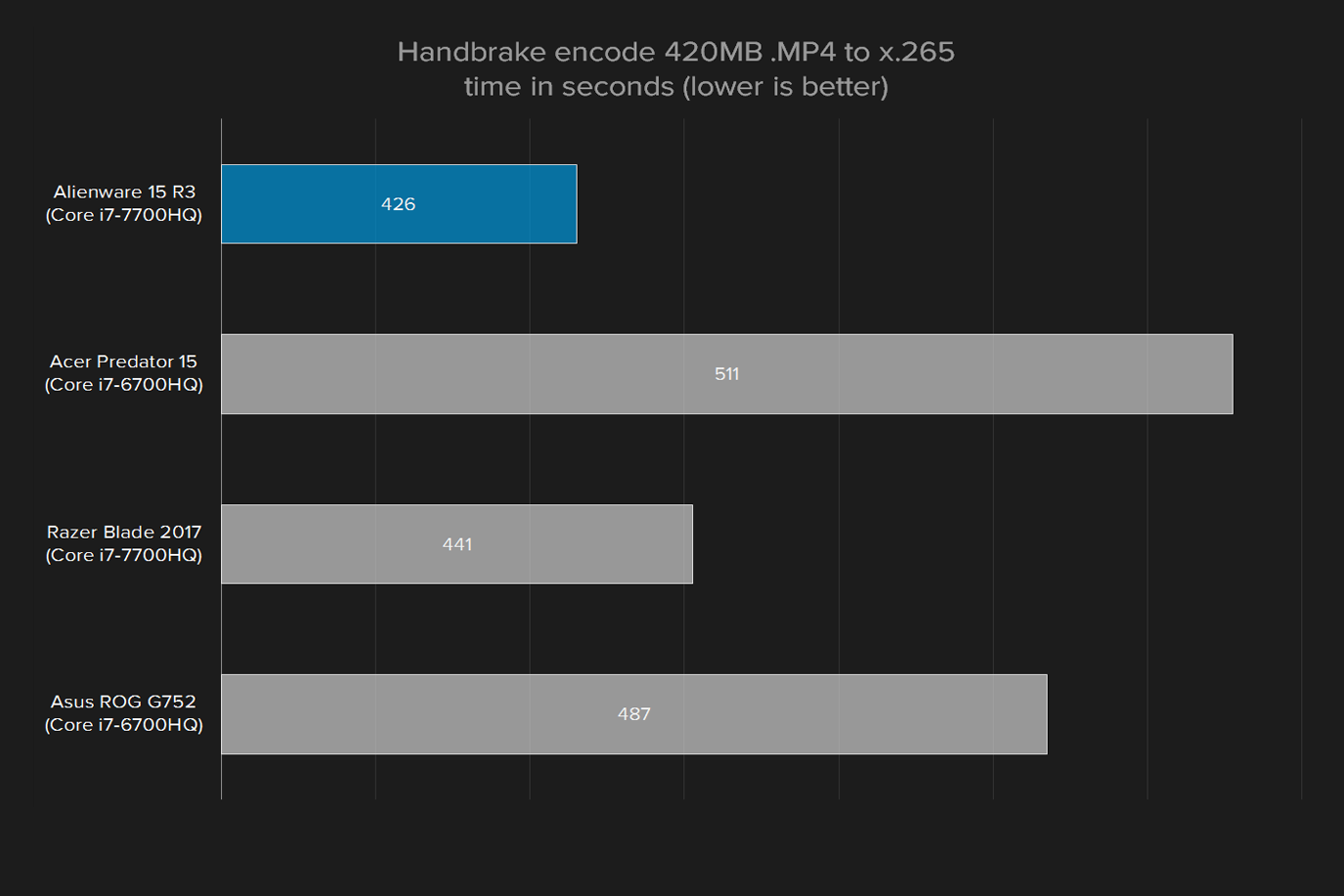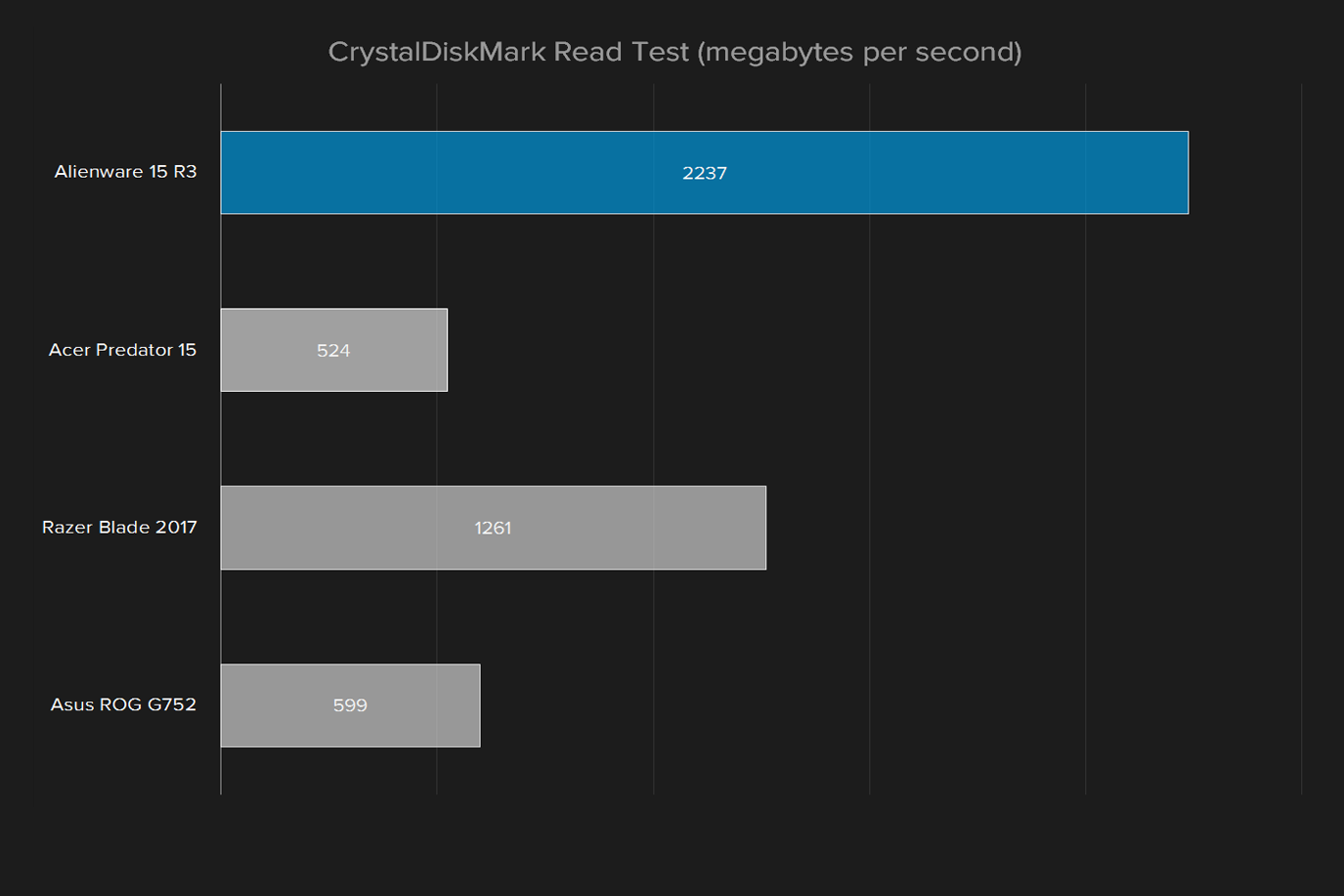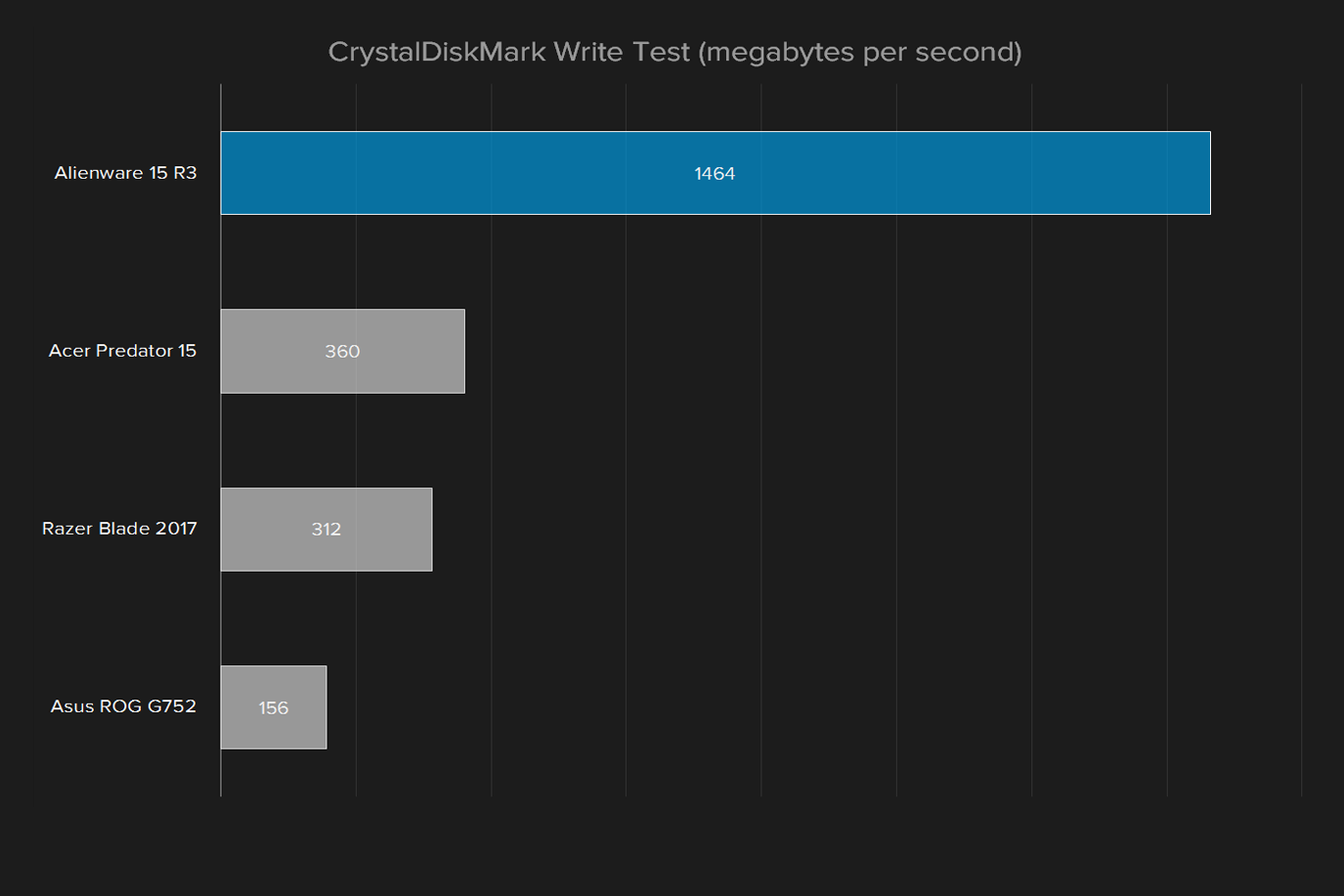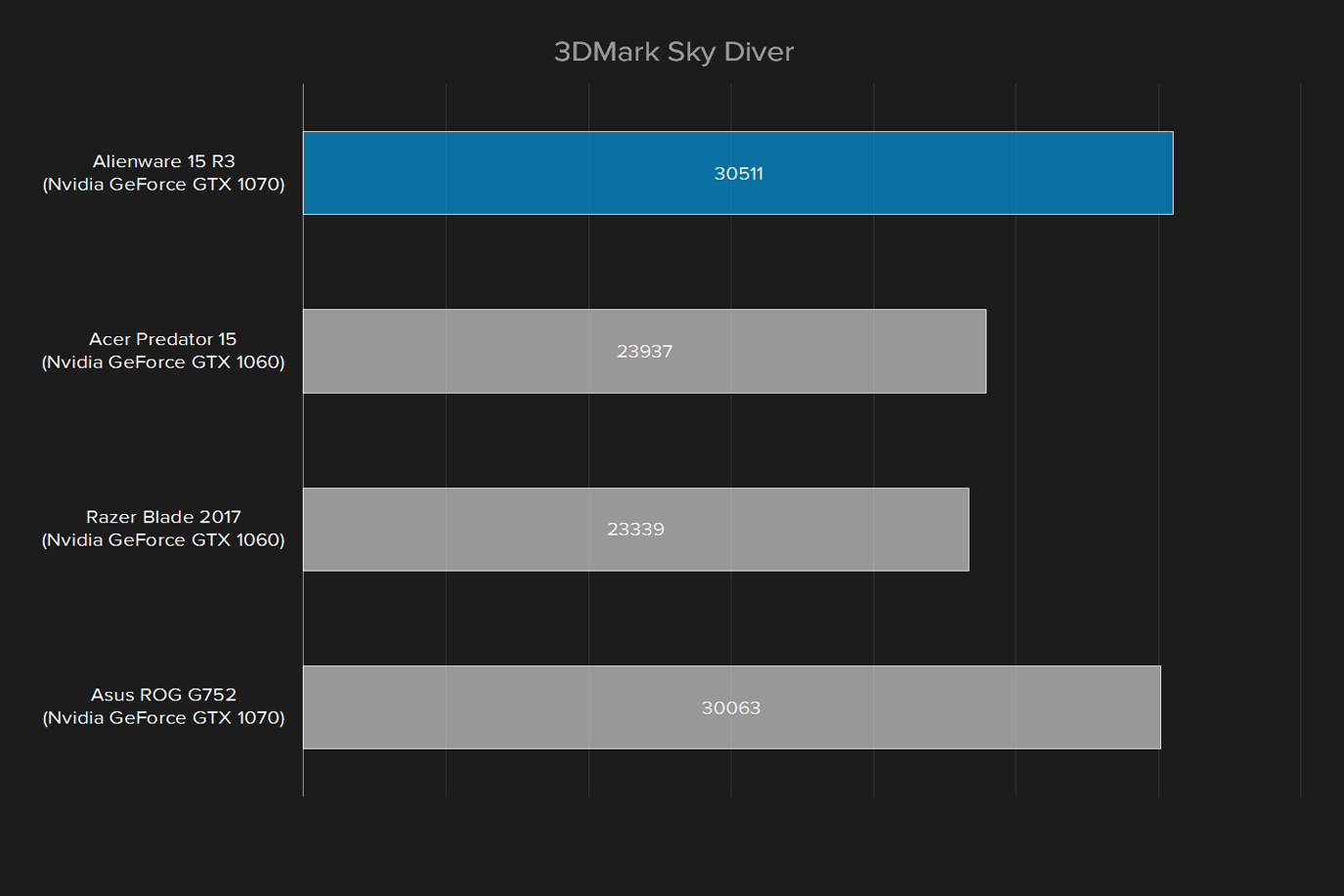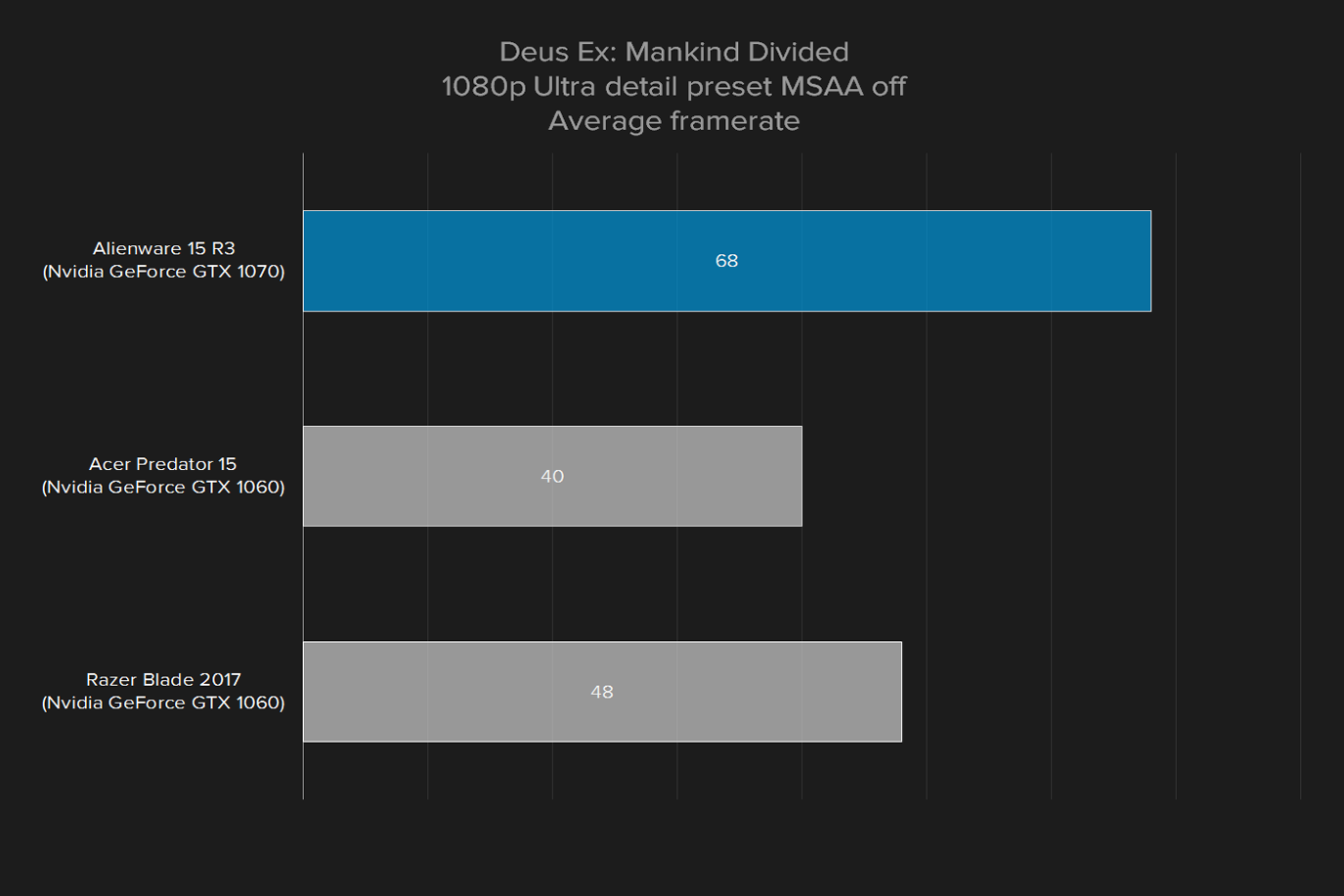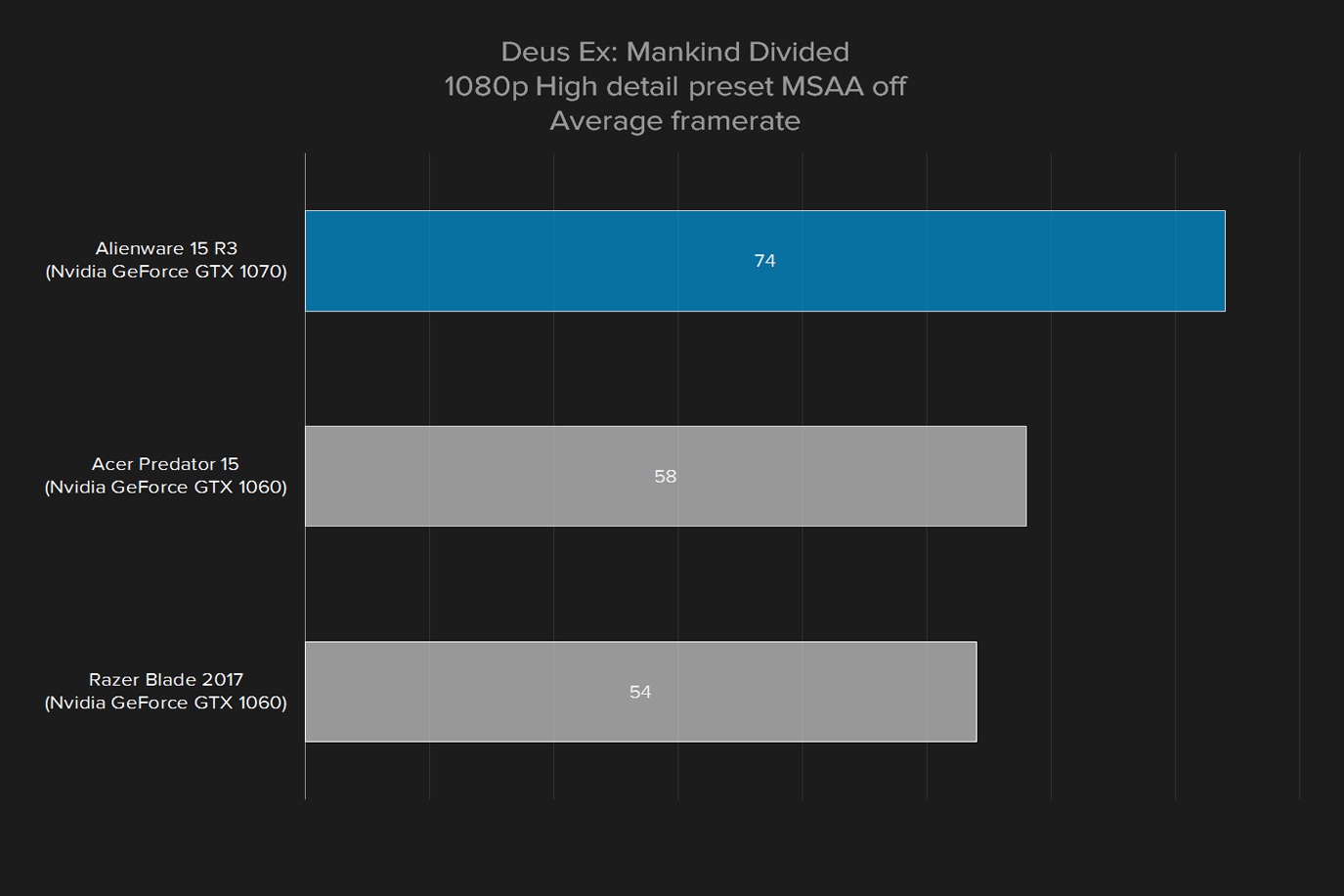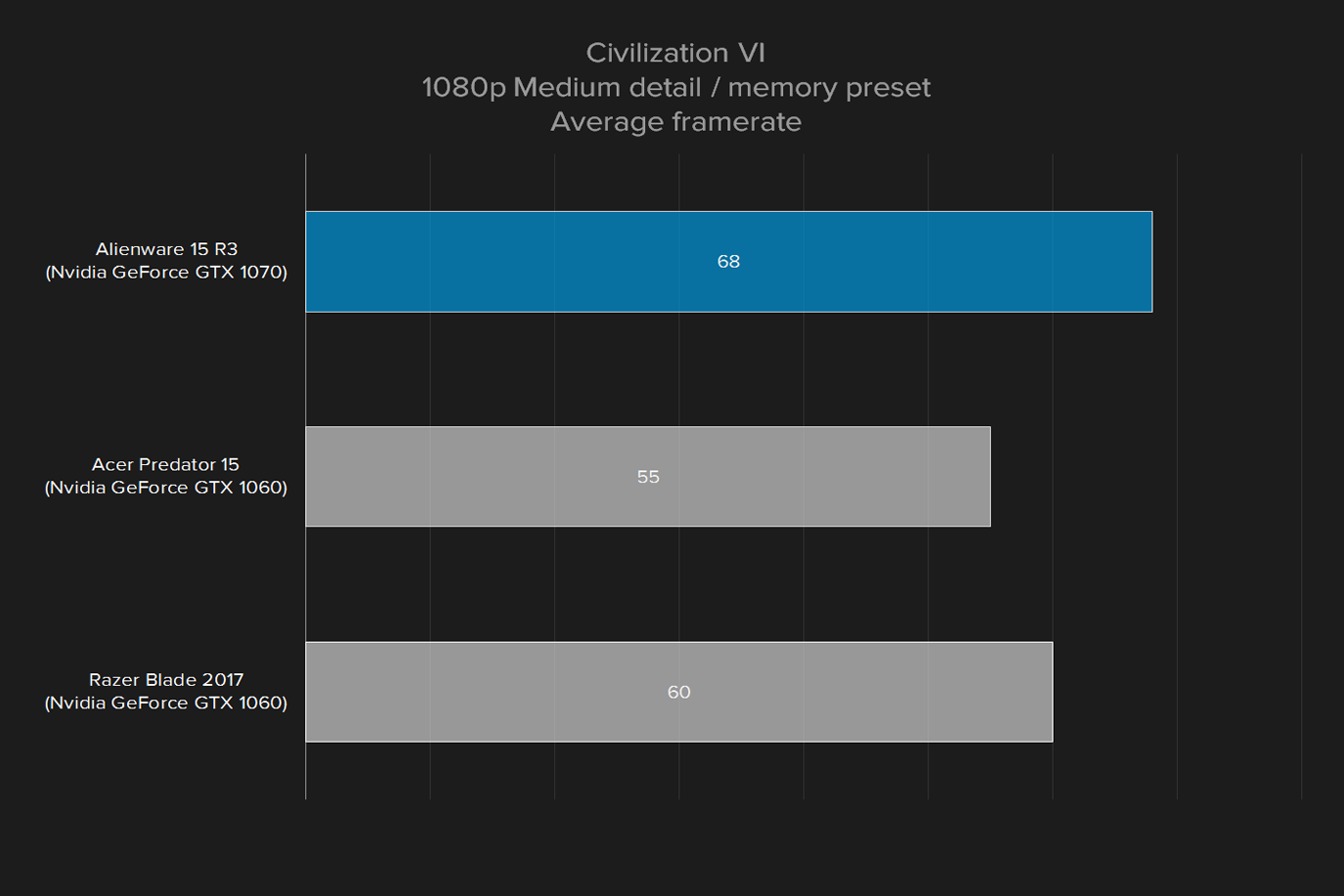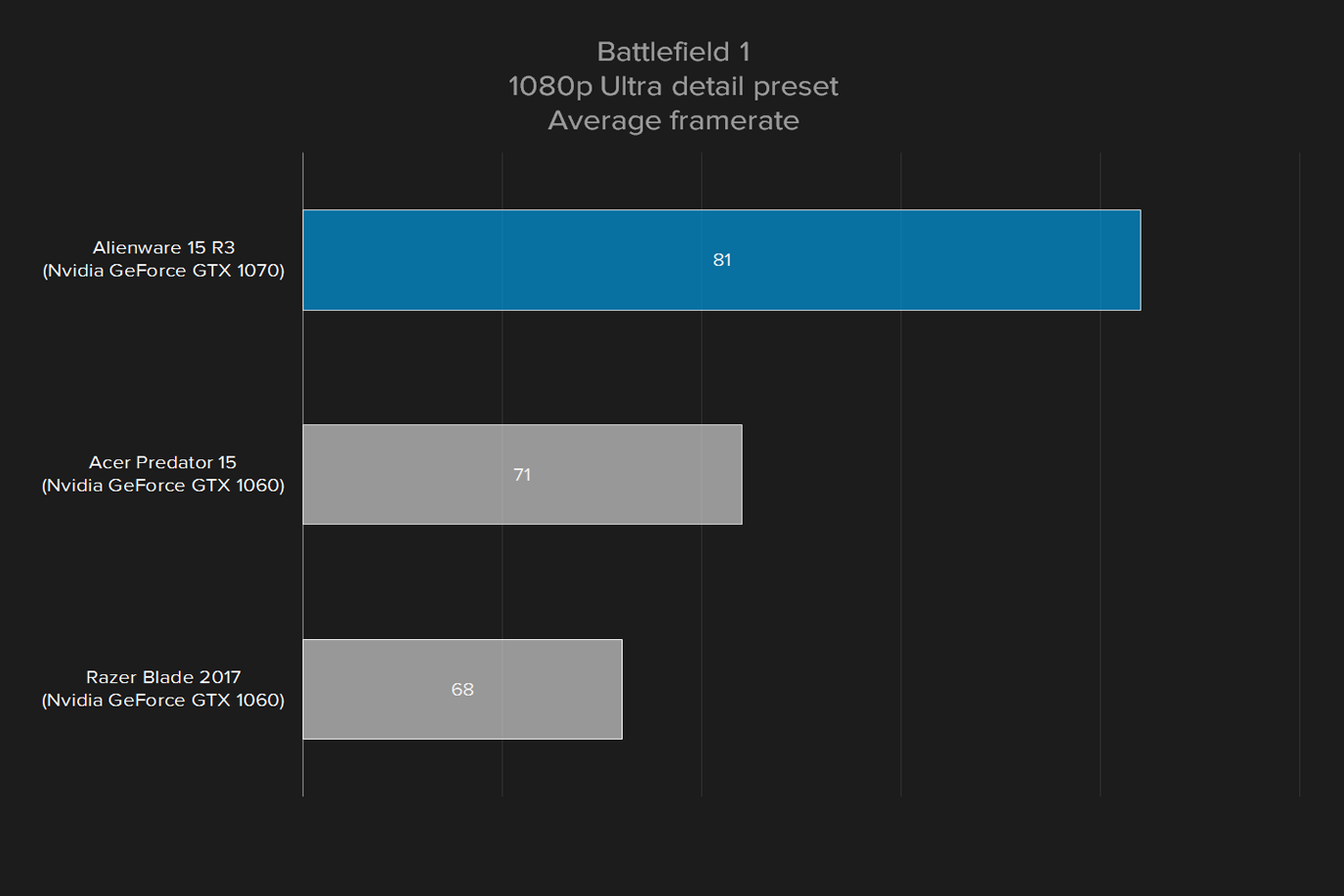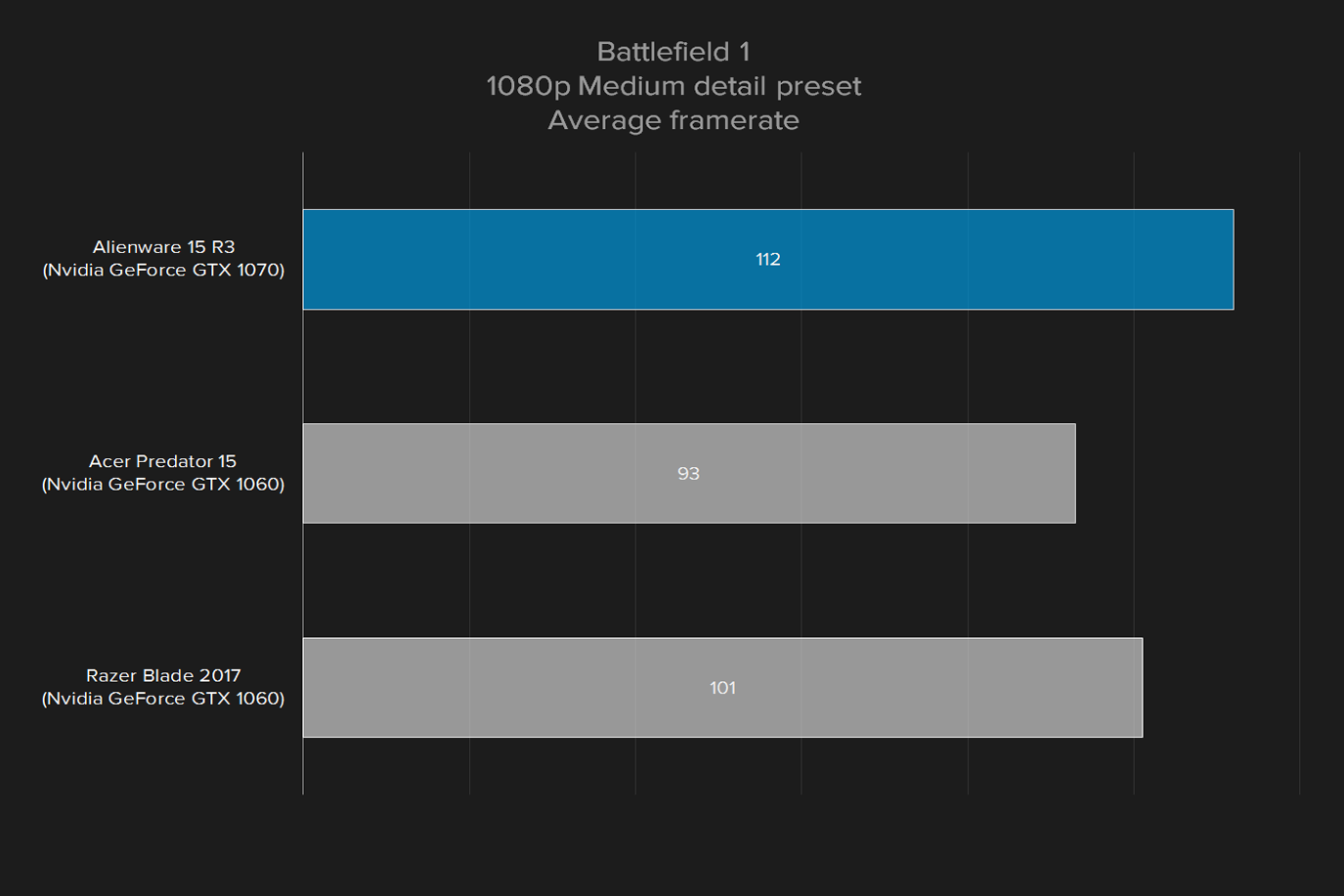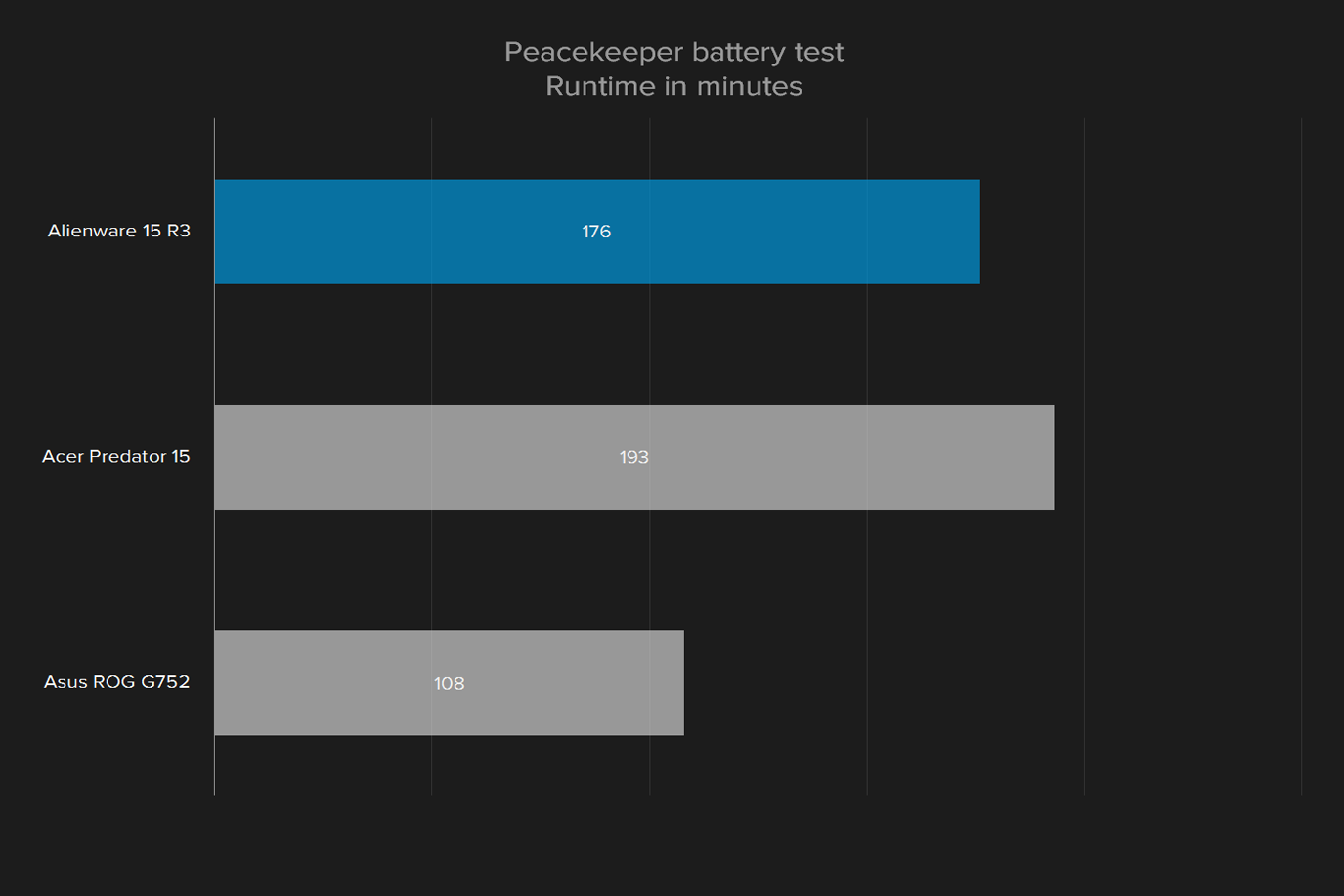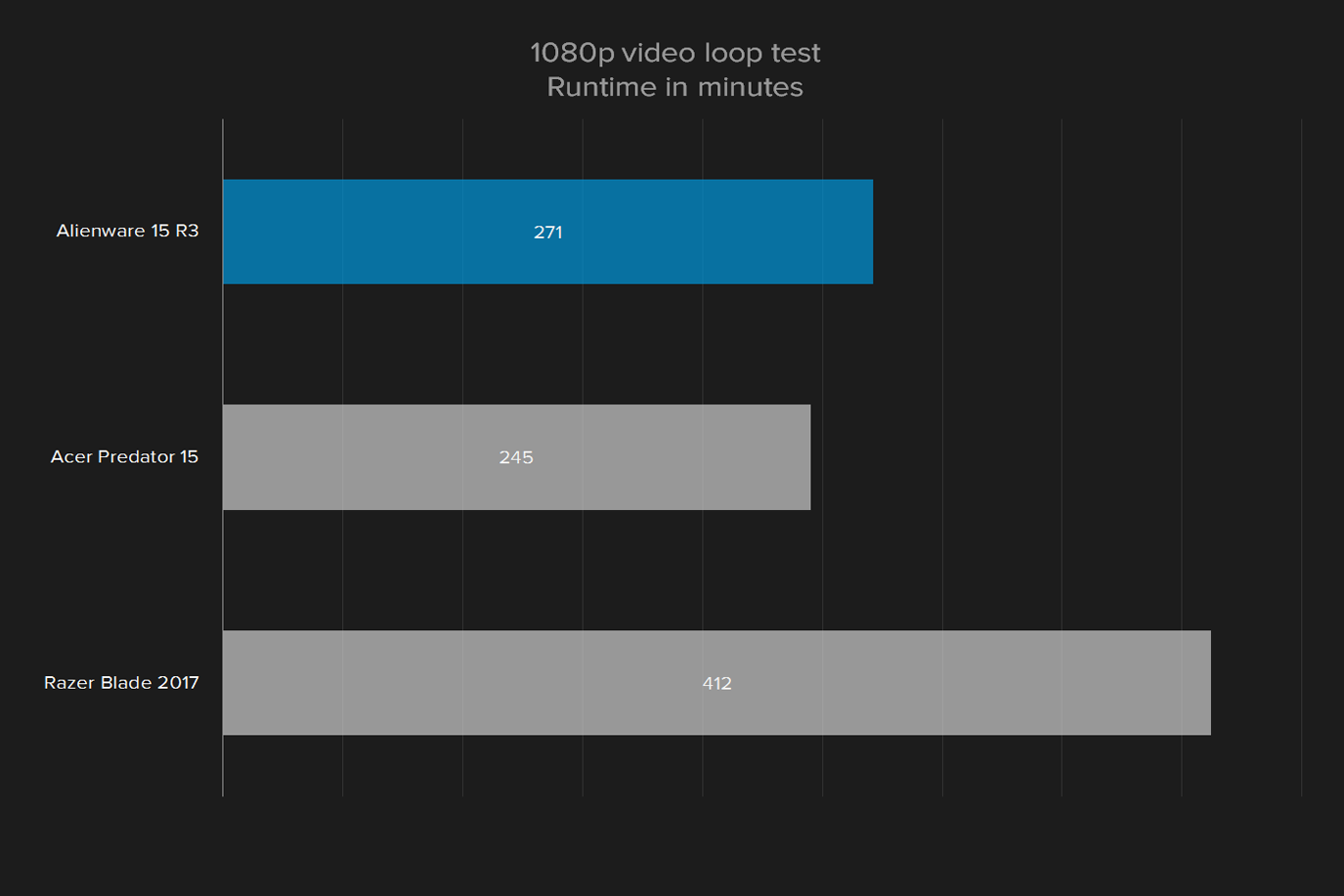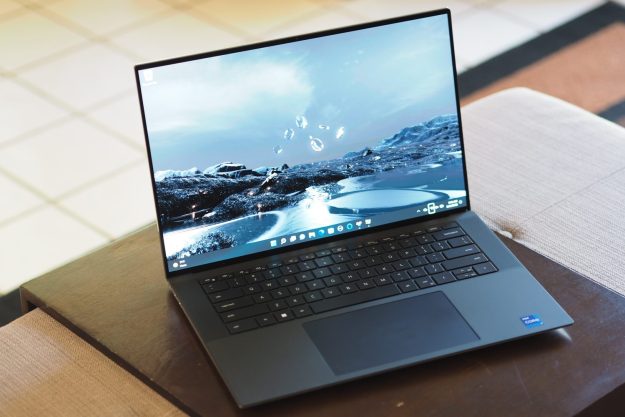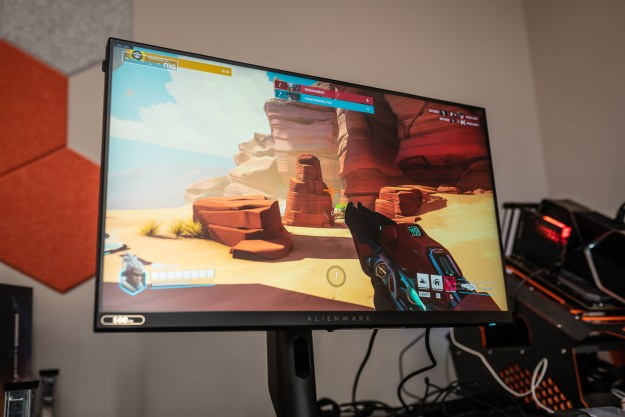
“Like a neutron star, the Alienware 15 R3 is powerful and immense, but a little tough to look at.”
- Excellent gaming performance
- Powerful hardware
- Remarkable build quality
- Poor battery life
- Low-quality display
Alienware is synonymous with PC gaming, and for good reason. Despite sometimes charging a premium for its LED-bedazzled gaming notebooks, Alienware has established a reputation for putting out durable, reliable gaming hardware.
Dense and durable
Starting with the overall aesthetic, Alienware does a great job of iterating on the classic Alienware “look” by ditching some of the flimsier design elements present in older models. The new chassis is smooth and heavy, with a slightly angled front-edge. The display panel and hinge are rock-solid and flush with the body of the laptop, giving the whole thing a uniquely grounded feel.
It’s a very large laptop, and the vents on the back increase the overall profile significantly. The display hinge is recessed from the back of the laptop by about an inch and a half. Behind the hinge, a portion of the chassis juts out, and lends the Alienware 15 R3 an unusual shape.
Sitting on a desk, the bar is a nice addition. It features several ports, to keep cords from taking up desk space, and the vents do an excellent job of shedding excess heat. But the added length makes the Alienware 15 R3 a little difficult to carry around. It’s slightly longer than a typical 15-inch laptop, or even a 15-inch gaming laptop, so the profile is unusual to say the least.
For a laptop with so much extra space, it’s not used very effectively. For instance, the display panel looks too small for this chassis, in part because there’s a giant bezel at the bottom of the display, like a big Jay Leno chin. The trackpad also feels a little small, and it’s surrounded by empty space.
My ports runneth over
The Alienware 15 R3 takes a different approach. Rather than play it coy, this thing is covered in ports. On the right-hand side, there’s a single USB 3.0 port, but on the other side, there are two more, plus a headphone jack, and a microphone jack.
The Alienware 15 R3 impresses nearly as often as it disappoints.
Moving on to the back-side, the Alienware 15 R3 features an HDMI port, a Mini-Display port, yet another USB 3.0 port, a USB Type-C/Thunderbolt 3 port, a power jack, and finally, an Ethernet port. There’s also a port for the Alienware Graphics Amplifier, Alienware’s proprietary external GPU.
It’s not only the number of ports that sets the Alienware apart, it’s their location. Business-oriented
The cutting edge
The Alienware 15 R3 is about an inch thick. While that thickness is important for keeping the internals nice and cool under load, and giving us all those nice port options, it’s also helpful for one other aspect: the keyboard.
With three separate lighting zones, and a nice deep key travel, the keyboard on the Alienware 15 R3 is very pleasant to type on. According to Alienware, it’s backed by a metal plate to keep the keyboard from warping or flexing too much while you type, and it shows. Typing feels grounded, the laptop doesn’t move excessively and doesn’t flex at all even when you type angry — that’s important, this is a
The Alienware 15 R3 features an RGBLED backlit keyboard, in addition to the LED strips on the sides of the chassis. The lighting is easily customizable via the included Alienware utility. Users can set up simple animations, customize each zone, or turn the lights off entirely.
The LED-backlit trackpad is similarly customizable, and pleasantly responsive. Thanks to Windows Precision Touchpad support, the trackpad is quick and accurate. The touchpad supports taps but doesn’t click itself, like some trackpads. Instead, the laptop has two physical buttons on the bottom edge of the trackpad.
These buttons are flimsy, and feel out of place on such a well-built laptop. They have some wiggle, like they’re the wrong size for the laptop. Both buttons travel a little too deeply, so our fingertips frequently caught on the sharp glass edge of the trackpad when pressing the buttons.
Devoid of life
The Alienware 15 R3 has a few different display options available, but our review unit featured a 1080p display with a 120Hz refresh rate and G-Sync support panel. Our review model did reasonably well on a few metrics like color accuracy and color gamut, landing right in the middle of the pack, but its contrast ratio was low for a $2,400 laptop.
Hitting around 70 percent of the AdobeRGB scale is common for
Iterating on a classic design, the Alienware 15 R3 ditches flimsy design elements in favor of robust durability.
None of these scores would be deal breakers unless you needed a laptop for highly color-sensitive work like professional photo editing.
Contrast is a different story. The Razer Blade managed an impressive 1040:1 contrast ratio, which means colors are vibrant, and shadows are deep and inky. Everything has a unique sense of depth, and games seem to leap off the screen. The Acer Predator 15 didn’t do as well, but even at 710:1, games were appropriately vibrant. Colors were lifelike and bright, and shadows were reasonably dark.
Moving on down the line, the Alienware 15 R3 turned in a maximum contrast ratio of 510:1, and it showed in real-world use. Colors looked drab, shadows were gray instead of black, and the display crushed the life out of many scenes in both games and movies.
Our review unit’s support for G-Sync, combined with the 120Hz refresh rate, made for extremely smooth gaming. However, we think the compromise made in image quality may not be worthwhile. We’d prefer a 60Hz display with G-Sync, if it meant those colors would pop.
Stellar sound
The Alienware 15 R3 features a pair of front-firing stereo speakers capable of filling a small room with lifelike sound. Which is to say, they’re loud. More than that, they provide rich sound to any gaming experience.
They’re not as directionally accurate as a pair of surround-sound
For movies, videos, and music, the speakers on the Alienware 15 R3 easily eclipse the speakers on its nearest competitors.
Just shy of warp speed
The Alienware 15 R3 comes standard with a 7th-generation Intel Core i7-7700HQ, one of the quickest mobile processors on the market today. For everyday tasks, the processor keeps up beautifully, handling intensive applications like Photoshop and heavy multi-tasking without skipping a beat.
In Geekbench 4 the Intel Core i7-7700HQ easily overtook the Alienware’s nearest competition, running the previous-generation Core i7-6700HQ, when it came to single-core performance. Multi-core performance was a bit of a mixed bag for the Alienware 15 R3, though it managed to push past all but the high-end Asus ROG G752.
The Intel Core i7-7700HQ is the quad-core processor of choice for most mid-and-high-end
Hyper-drive not included
It’s always a little disappointing when a manufacturer opts to include a slow hard disk in a premium laptop, but thankfully our review unit featured a lightning-fast 512 GB SSD in addition to its much slower, but larger, 1TB HDD. It’s not the most exciting component under the Alienware’s hood, but it is one of the most impressive.
The included 512 GB SSD ran circles around the nearest competition, with read speeds of 2,237 megabytes per second, and write speeds of 1,464 MB/s. Even the Razer Blade, which featured a snappy and quick SSD, only managed a fraction of the Alienware 15 R3’s write speeds.
The Goldilocks Zone
Sandwiched between the modest but powerful Nvidia GeForce GTX 1060, and the overwhelmingly powerful GTX 1080, sits the GTX 1070. One of Nvidia’s 10-series graphics cards, kitted out with the latest Pascal architecture and desktop-grade power, it’s become a popular option for gamers looking for a balance between power and price.
So it comes as little surprise that Alienware saw an opportunity with the GTX 1070, and selected the mid-high-end card as the GPU of choice for the revamped Alienware 15 R3 up and down the line. The cornerstone of the 15-inch Alienware lineup, the GTX 1070 is less of an overachiever than the GTX 1080, but offers some serious horsepower over the GTX 1060, without putting out too much extra heat.
Going head-to-head with the Acer Predator 15 and Razer Blade, one thing is abundantly clear: the Alienware 15 R3’s GTX 1070 reliably outperforms the GTX 1060. In Deus Ex: Mankind Divided, the Alienware 15 R3 eclipsed the Acer Predator 15 by a comfortable margin — hitting 68 frames per second on average, to the Predator’s 48 frames per second.
In For Honor, the Alienware’s GTX 1070 further outpaced the competition, hitting an average framerate of 107 FPS to the Razer Blade’s 67 FPS with detail settings maxed out. That’s a sizable gulf, but it narrows somewhat with Battlefield 1 — the Alienware managed a respectable 81 frames per second to the Razer Blade’s 68 FPS, and the Acer Predator’s 71 FPS.
Moving on to Civilization VI, we only saw a slight margin of victory over the competition, with the Alienware 15 R3 hitting 59 FPS on ultra-high settings, while the Razer Blade came in at 53 FPS and the Acer Predator hit 54 FPS. It’s a narrow margin, but it’s still a victory.
Taken as a whole, the GTX 1070 itself is a reliable performer but it’s important to keep in mind the leap from GTX 1060 to GTX 1070 is a smaller performance gain than you’d see making the jump from a GTX 1050 to a GTX 1060, for instance. It’s still a performance jump, as our test results indicate, but it’s not always a dramatic one.
Not exactly Voyager 2
This laptop is deceptively large. At around an inch thick, it seems thin for a
On top of that, it’s a very dense laptop. Weighing just under eight pounds, it’s surprisingly heavy. It’s a good weight, though, which makes the Alienware 15 R3 feel solid and substantial. When it goes into a bag and gets slung over your shoulder for a long commute, however, those extra pounds start to really add up.
Looking at a more objective metric like battery life, the Alienware 15 R3 starts to feel even less appealing as a portable gaming platform. Despite featuring a 98 watt-hour battery, we were hard pressed to get more than four hours of battery life out of the R3 on a single charge. In the Peacekeeper battery benchmark, which is typically tough on battery life, the Alienware 15 R3 only managed about three hours.
To be fair, disappointing battery life is expected for most
Alien artifacts
The software included with the Alienware 15 R3 was appreciably sparse — just a few Alienware branded utilities, nothing intrusive, like unwanted antivirus apps. The included software for configuring the lighting effects is easy to use, easy to program, and straightforward, with a wide array of options available.
Warranty
The Alienware 15 R3 comes with a standard Dell warranty, covering manufacturer defects for up to one year from the purchase date. It also comes with one year of premium support, offering 24-hour access to support technicians.
Our Take
The Alienware 15 R3 impresses more often than it disappoints, but with such a high price and a couple of critical flaws it faces some fierce competition from rivals like Acer and Razer. Let’s break it down point by point, and see if the Alienware 15 R3 can come out on top.
Is there a better alternative?
There are certainly a few. It’s worth mentioning that our review unit, as received, would run you about $2,400, and at that price point there’s an awful lot of competition. Similarly configured, the Acer Predator 15 comes in at $2,000 — featuring the same processor, graphics card, and
If the Alienware’s lack of portability is a concern, the Razer Blade starts at $1900 with the same processor and a GTX 1060. To put it in direct competition with the Alienware though, the Blade comes in at $2,400 if set up with a
All in all, there are a lot of options available at the $2,000 to $2,400 price range, and a handful of them provide better displays and comparable performance to the Alienware 15 R3.
How long will it last?
If team of archaeologists come across an Alienware 15 R3 while studying the blasted ruins of our world, it wouldn’t be too surprising if it booted up just fine. Okay — maybe that’s an exaggeration, but this thing is rock-solid. It’s heavy, it’s well built, and it’s going to last a while.
However, some of the hardware in our review unit might age quickly. The 1080p display with a 510-to-1 contrast ratio did not impress. A year or so down the line, as panels improve and prices come down, cheaper
Should you buy it?
No, not really. There are number of better alternatives at slightly lower price points, and your cash will go further with a brand like Acer — or net you a more portability with the Razer Blade. But if you like the Alienware’s design, the build quality, and the hardware, there are a few ways to mitigate the display issues we encountered. It could be worth spending a little extra to pick up the
Editors' Recommendations
- Best Alienware deals: Gaming PCs, laptops, and monitors
- This is a first for Alienware gaming laptops
- Why the most powerful laptops of 2024 might not use Intel’s latest chips
- The Dell XPS 15 has one major advantage over the MacBook Pro
- Alienware just changed everything you know about its desktops





